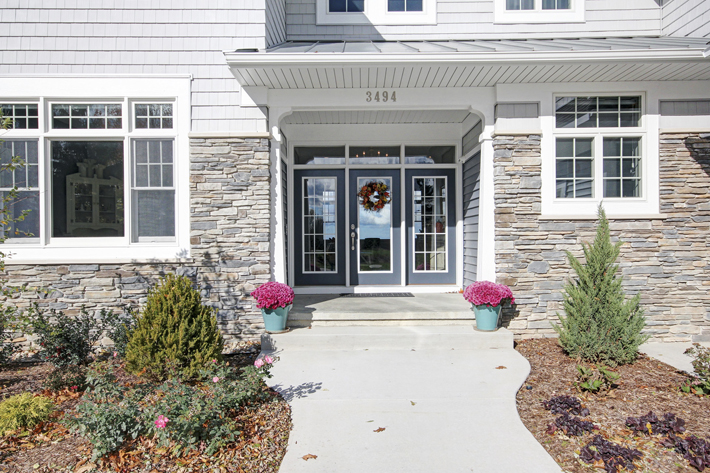
Your front door is one of the most important aspects of your home’s design. It’s the first thing a visitor notices, it impacts your home’s overall feel, and can increase the curb appeal if you choose wisely. Add that to the fact that once you pick your front door style, you’re pretty much stuck with it until you do a major remodel or move out, the pressure is definitely on. When choosing a front door for your home, there are three main aspects to consider: style, size, and material. You’ll want to keep all three in mind in order to find the perfect front door for your home.
Style: To determine the right style for your front door, consider first the style of your house. If it’s all squared edges and symmetry, an arched door probably isn’t the look for you. If your home has a more whimsical look, it’s likely that you’ll want to stray away from the traditional six-paneled door and pick something more unique.
Size: Additionally, the size of your home should have a big impact on the size of your door. Most traditional front doors are 32” – 36” in width, and you’ll want to take into account any sidelights you plan on having installed, since these also add width. If you have a larger than standard entryway, you might consider an extra-wide door, and double doors are always a dramatic option as well.
Material: Your front door is certainly a big design statement, but more importantly than that, it has to hold up to the elements. It’s your first defense from snow, wind, and rain, and if it can’t hold up to that, you’re going to have some issues. There are three main materials that most people tend to go with for their front door, each with their own benefits and drawbacks:
Wood: Perhaps one of the most traditional choices, wooden doors that are manufactured today are almost as durable as any man-made material. In the past, wooden doors were prone to warping and were worn down easily. Today, following major technology improvements, your biggest sacrifice with a wooden door is going to be on energy efficiency. They aren’t as likely to keep out extreme temperatures, or keep in your climate-controlled air, so if this is your material of choice, make sure you maintenance your weather stripping regularly.
Fiberglass: As today’s most popular option, fiberglass doors are highly durable and affordable. Many are made to look just like wood, and can be stained a variety of colors. They hold up well in harsh and extreme climates, don’t need much maintenance, and are usually insulated with foam, which makes them an excellent option for energy efficiency.
Steel: A seriously durable material, steel will hold up for a very long time, as long as it’s not dented. Most small dents can be fixed with an auto-body repair kit, but bigger dents sometimes make it necessary to replace the door. Steel is probably the least expensive option, is energy-efficient, and won’t warp, but the low cost is often offset by its short lifetime when it comes to dents.
